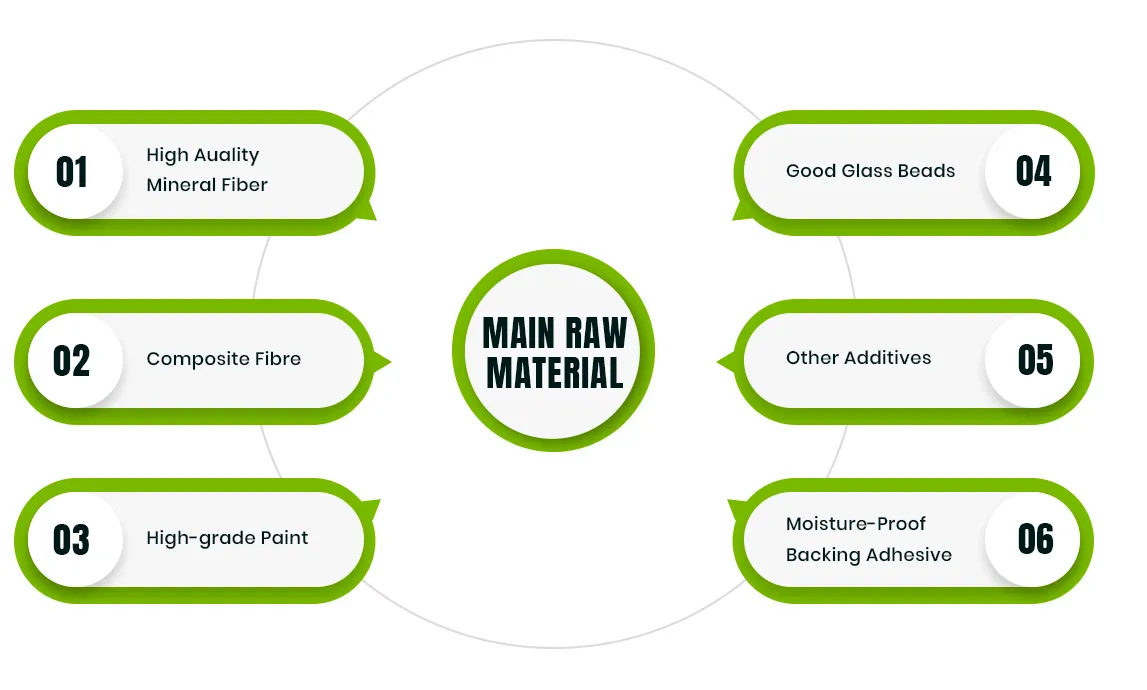9 月 . 22, 2024 05:03 Back to list
grid ceiling material
Exploring Grid Ceiling Materials A Comprehensive Guide
Grid ceilings, often referred to as suspended ceilings or drop ceilings, are widely used in commercial and residential spaces for their aesthetic appeal and functional benefits. The choice of grid ceiling material plays a crucial role in the overall performance and appearance of the ceiling system. In this article, we will delve into the various materials used for grid ceilings, their advantages, and considerations for selection to help you make informed decisions.
Types of Grid Ceiling Materials
1. Mineral Fiber Panels Mineral fiber is one of the most common materials used for ceiling tiles. These panels are known for their excellent sound absorption, making them ideal for offices, schools, and any space where noise control is necessary. They are lightweight, easy to install, and come in various textures and finishes. However, they can be susceptible to moisture damage if not properly sealed or if located in humid environments.
2. PVC (Polyvinyl Chloride) Panels PVC panels have gained popularity due to their durability and moisture resistance. These panels are perfect for environments prone to humidity, such as kitchens and bathrooms. They are easy to clean, available in a wide range of designs, and are resistant to staining and fading. The downside is that they may not provide the same level of sound absorption as mineral fiber.
3. Metal Panels Metal ceiling tiles, often made from aluminum or steel, are highly durable and can support a modern aesthetic. They are fire-resistant, easy to clean, and can withstand tough conditions, making them suitable for industrial applications. Metal panels can be perforated to provide acoustic properties, although they tend to be more expensive than other options. The installation process can also be more complex.
4. Gypsum Board Gypsum board, commonly known as drywall, is another option for grid ceiling installations. It offers a smooth, flat finish and excellent fire resistance. Gypsum can be painted or textured to fit the desired aesthetic. However, it is heavier than other ceiling materials, which may require additional support during installation, and it is not as flexible in terms of design as tiles are.
5. Fiberglass Panels Fiberglass ceiling tiles are known for their excellent acoustic performance and moisture resistance. They are lightweight and can be produced in various designs, including those that mimic wood or stone. Additionally, fiberglass ceilings can contribute to energy efficiency by providing insulation. However, they can be more expensive than mineral fiber options.
grid ceiling material

Considerations for Selection
When choosing grid ceiling materials, several factors should be taken into account
- Functionality Consider the primary purpose of the space. For example, if noise control is a priority, mineral fiber or fiberglass panels may be the best choice. - Moisture Resistance In areas with high humidity, such as bathrooms or kitchens, opt for PVC or fiberglass materials.
- Aesthetic Appeal Determine the design theme of your space and select materials that complement it.
- Cost Balance your budget with your needs. While metal and fiberglass materials can provide excellent performance, they often come at a higher price.
- Installation The complexity of installation may also influence your choice. Some materials require professional installation, while others can be installed easily by DIY enthusiasts.
In conclusion, selecting the right grid ceiling material is essential for achieving the desired balance of aesthetics, functionality, and cost-effectiveness in your space. Understanding the characteristics of each type of material will empower you to create an environment that meets your unique needs and style preferences.
-
Revolutionizing Interior Design with Ceilings t grid Suspended SystemNewsOct.29,2024
-
Revolutionizing Ceiling Design with ceiling access panel with Gypsum Tile WaterproofNewsOct.29,2024
-
Revolutionizing Interior Design with PVC Gypsum Ceiling: A Comprehensive GuideNewsOct.29,2024
-
Elevating Interior Design with High quality Mineral Fiber Ceiling TilesNewsOct.29,2024
-
Revolutionizing Interior Design with PVC Gypsum Ceiling: A Comprehensive GuideNewsOct.29,2024
-
Elevating Interior Design with High-Quality Mineral Fiber Ceiling Tiles: A Comprehensive GuideNewsOct.29,2024







